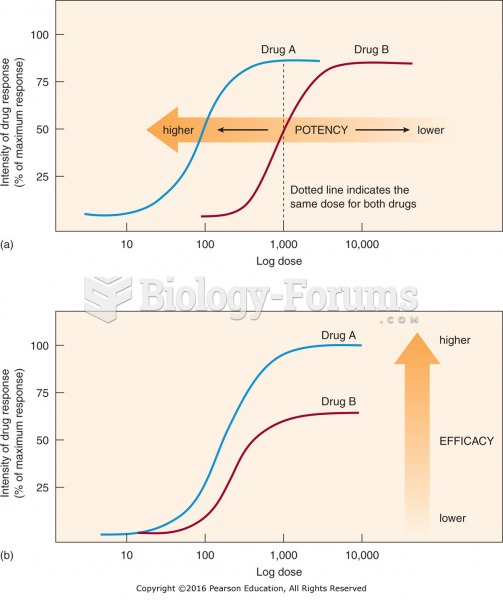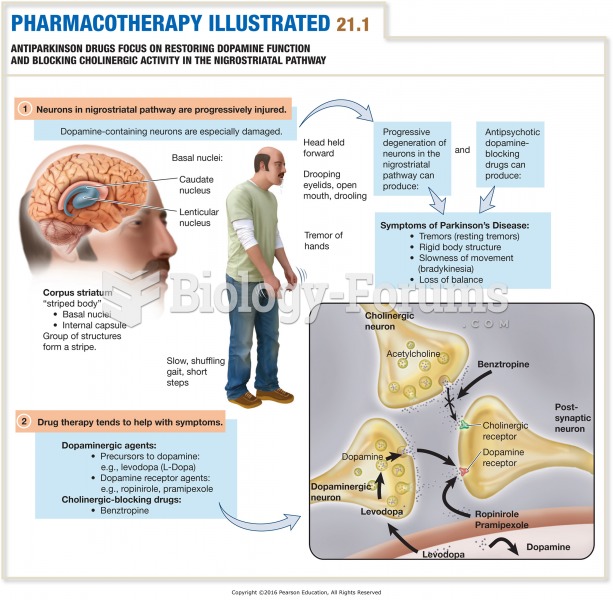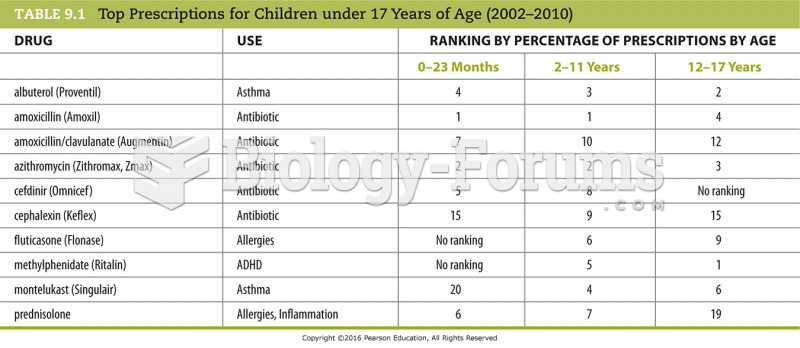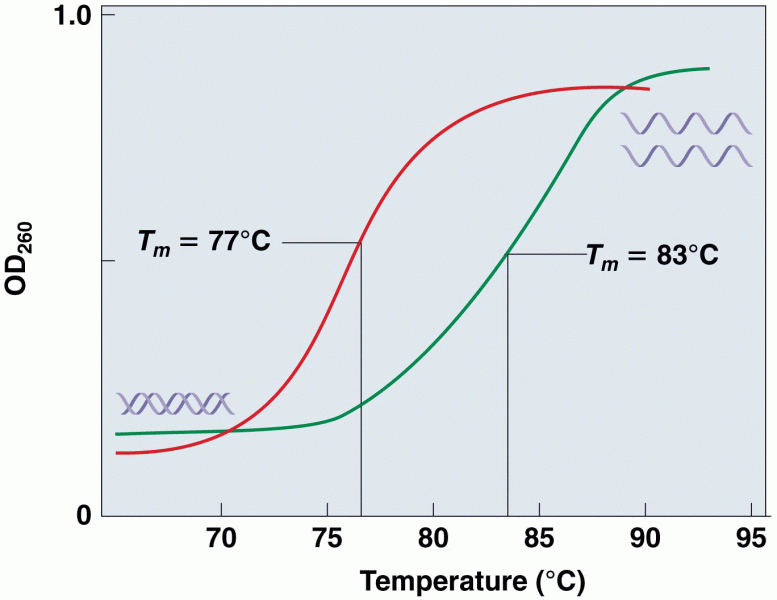|
|
|
The B-complex vitamins and vitamin C are not stored in the body and must be replaced each day.
Historic treatments for rheumatoid arthritis have included gold salts, acupuncture, a diet consisting of apples or rhubarb, nutmeg, nettles, bee venom, bracelets made of copper, prayer, rest, tooth extractions, fasting, honey, vitamins, insulin, snow collected on Christmas, magnets, and electric convulsion therapy.
Eating food that has been cooked with poppy seeds may cause you to fail a drug screening test, because the seeds contain enough opiate alkaloids to register as a positive.
Street names for barbiturates include reds, red devils, yellow jackets, blue heavens, Christmas trees, and rainbows. They are commonly referred to as downers.
Adolescents often feel clumsy during puberty because during this time of development, their hands and feet grow faster than their arms and legs do. The body is therefore out of proportion. One out of five adolescents actually experiences growing pains during this period.
 Potency and efficacy: (a) Drug A has a higher potency than drug B. (b) Drug A has a higher efficacy ...
Potency and efficacy: (a) Drug A has a higher potency than drug B. (b) Drug A has a higher efficacy ...
 Antiparkinson Drugs Focus on Restoring Dopamine Function and Blocking Cholinergic Activity in the ...
Antiparkinson Drugs Focus on Restoring Dopamine Function and Blocking Cholinergic Activity in the ...





